Devise fiat
Crypto-monnaies
Aucun résultat pour ""
Nous n'avons rien trouvé qui corresponde à votre recherche. Réessayez avec d'autres mots-clés.
What Is Defi 2.0 and How Does It Work?
What Is Defi 2.0?
Almost 3 years have been passed since the Defi projects start in 2019, the volume(24h) of typical Defi examples such as Uniswap (V3) has exceeded more than 1 billion, other projects such as Compound, PancakeSwap (V2), etc. also have exceeded more than 500 million. These successful Defi projects are decentralized financial infrastructures that provide stablecoin applications, borrowing and lending applications, decentralized central trading applications and DEXs, insurance applications and margin trading applications( click What is Defi? to learn more about Defi.). As time goes by and new innovative Defi projects develop, many crypto investors start to use the term "Defi 2.0" in late 2021. Defi 2.0 is built upon Defi 1.0 and to upgrade and solve the issues that exist in the early stage of Defi.
What Are the Problems of Defi 1.0?
First, let's explore the problems that Defi 1.0 exists. These problems that Defi 2.0 aims to solve.
- Sustainable: Most of the liquidity providers that participate in the Defi projects are mainly aimed at token rewards. As time goes by, it is not easy to sustain the liquidity of the platform. Also, there is no obvious connection between the participants, they don't have the enthusiasm to take part in the governance of the platform.
- Scalability: Most Defi projects' missions are trying to provide a financial solution with efficiency and economics for a broader population. However, the DeFi transactions require a longer time for confirmation and the gas fees are usually high.
- Liquidity: The funds will be locked up while providing liquidity. Most of the time, the token is just kept in the pool and cannot be used. In this case, the capital efficiency is low.
- Responsibility: DeFi projects never take responsibility for users' mistakes. People may stake billion of tokens in smart contracts that they have no idea about safety.
- Centralization: Most of the Defi projects nowadays have no DAO govern principles.
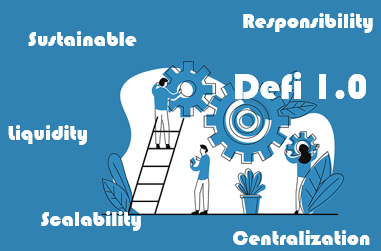
How Does Defi 2.0 Work?
What Defi should do is to lower barriers to entry financial system, people who can't step into the traditional financial institutions are able to get support from Defi. Defi 2.0 should overcome the issues above and build a democratic financial world. So how does it work?
- DAO governance and decentralization. The community members have the right to vote for the development of the project. Members are stakeholders, they have the enthusiasm to take part in the project and truly realize decentralized governance.
- Release the lock-up token. Defi 2.0 allows investors to use LP tokens and yield farm LP tokens as collateral for a loan. With this mechanism, you can unlock extra value from the tokens while still earning pool rewards.
- Collateral can generate interest. The collateral tokens can generate interest, which can be used to pay off your loan.
- Insurance fund to reduce impermanent loss. The risk of liquidity mining is impermanent loss. Defi 2.0 may set up an insurance fund to make up for your impermanent loss.
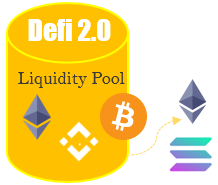
What Are the Top Defi 2.0 Projects?
- Olympus—community-owned decentralized financial infrastructure, alternative mode of liquidity mining. Olympus provides OHM tokens backed by a basket of assets (e.g. DAI, FRAX) in the Olympus treasury. Then they use the "Bonding strategy" to get native tokens like ETH, which Olympus can acquire its own liquidity. For example, people can sell DAI for discounted OHM tokens in an Olympus bond. This mechanism makes sure Olympus got its own liquidity and will not run out like other Defi projects if the liquidity mining rewards run out. Another innovative feature of Olympus is it pays users additional OHM tokens in exchange for locking the token up. Without liquidity mining, Olympus has accumulated a total value of more than $2.3B.
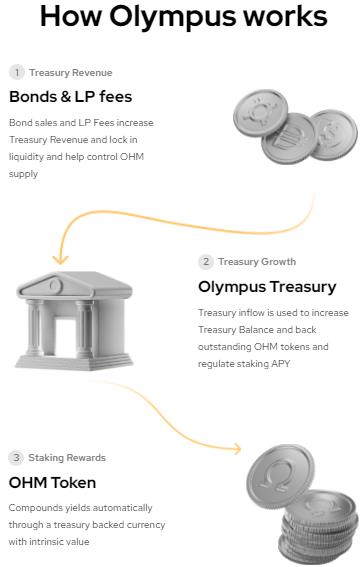
- Convex Finance—Deposit liquidity, earn boosted CRV and rewards. Convex allows liquidity providers to earn trading fees and claim boosted CRV without locking CRV themselves. Liquidity providers can receive boosted CRV and liquidity mining rewards with minimal effort. Convex Finance now has reached a total revenue of more than $650m.
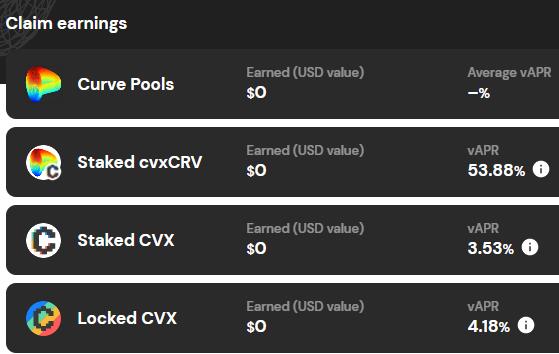
- Alchemix—Self repaying loan. It gives users the ability to get an advance on their future yield immediately. Yield earned by your collateral from yearn.finance vaults automagically repays your advance over time.
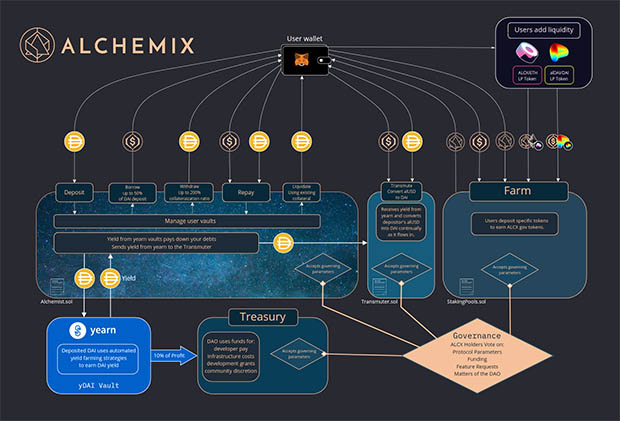
Retrouvez-nous sur:
X (Twitter) | Telegram | Reddit
Télécharger l'application CoinCarp maintenant: https://www.coincarp.com/app/
Up to $6,045 Bonuses
Sponsored
Join Bybit and receive up to $6,045 in Bonuses! Register Now!